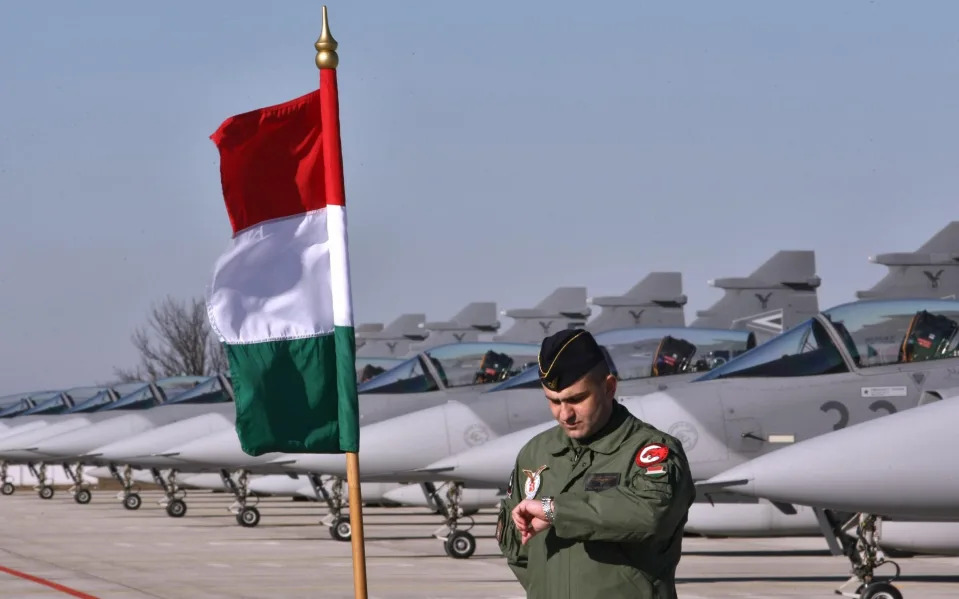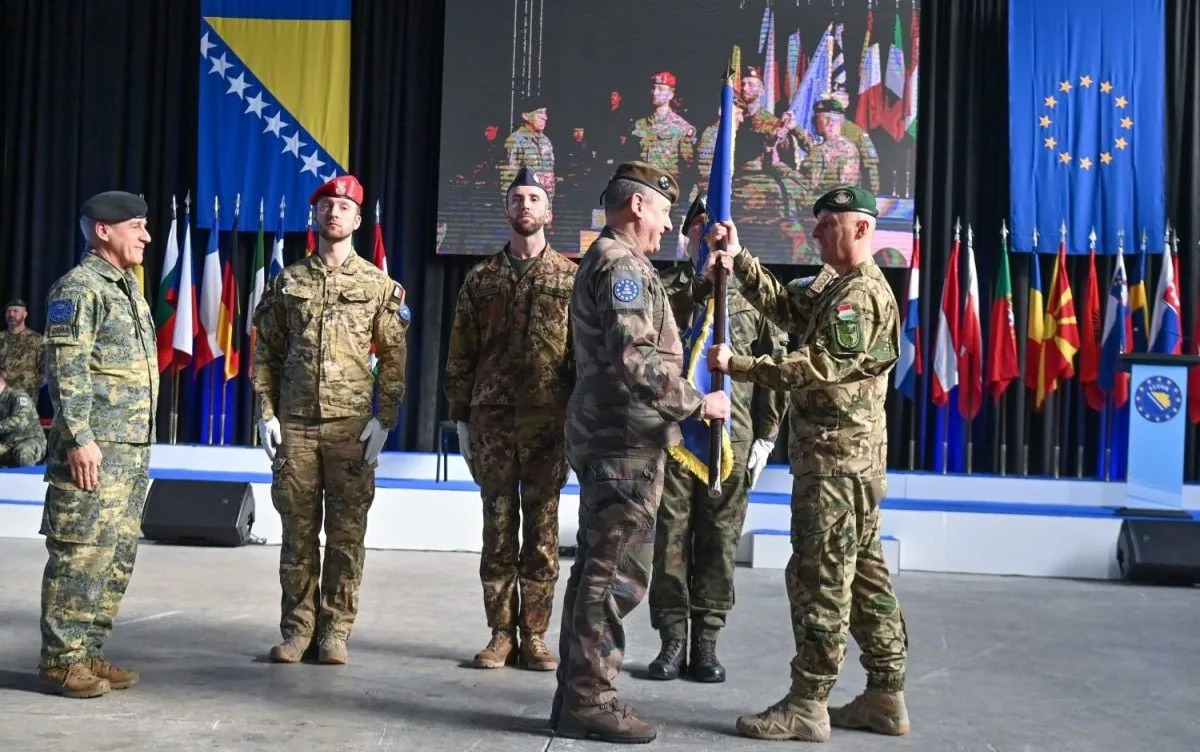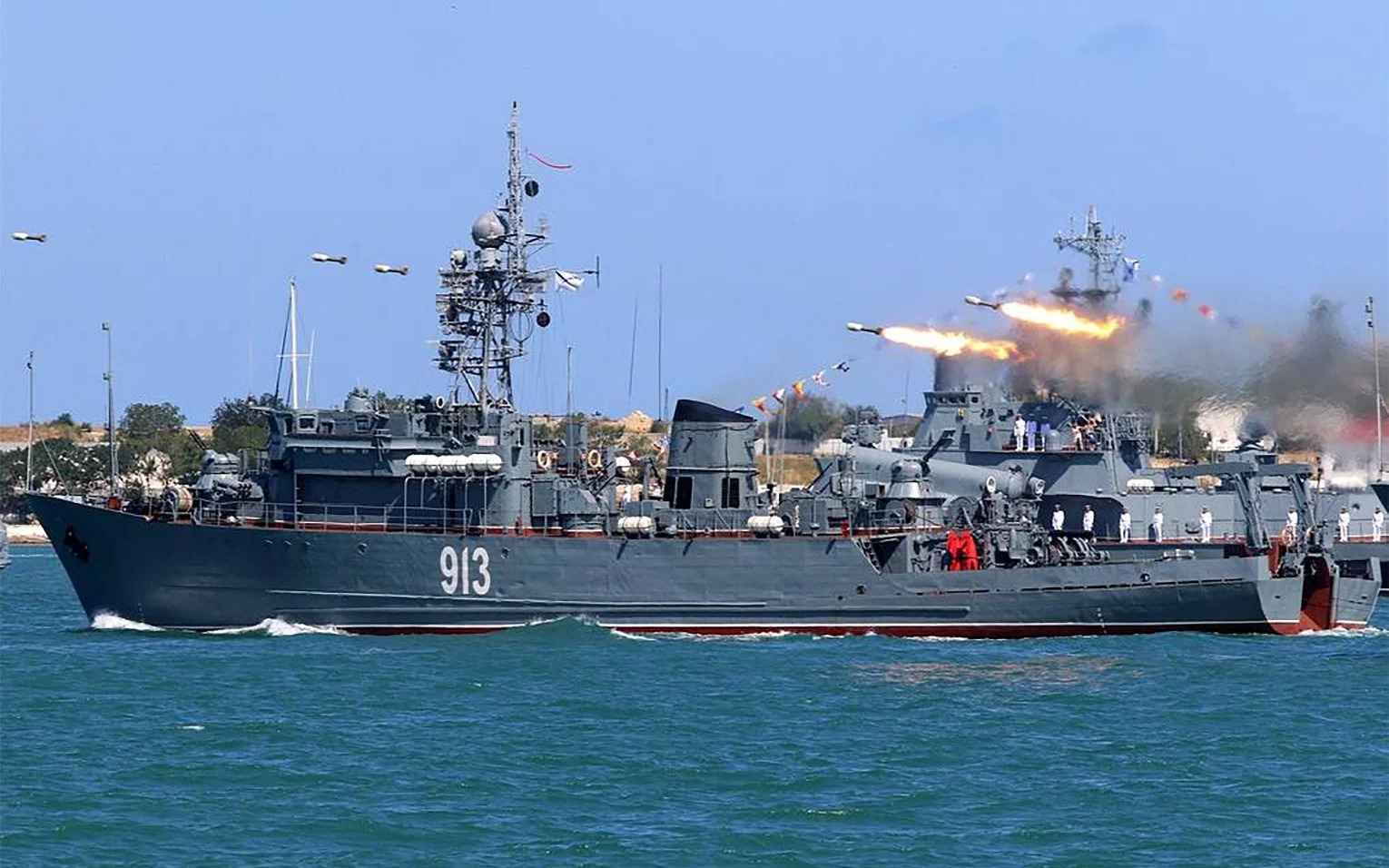Hungary is committed to Nato and to peace in Europe

László Sticz taking over the commander's position of EUFOR Operation Althea Handout from Hungarian military.
Last week Rishi Sunak, the Prime Minister of the United Kingdom, announced that the UK’s military spending would rise to 2.5 per cent of the national income by 2030. He also stressed that the UK was “not on the brink of war” but claimed that the extra money would put the country’s defence industry “on a war footing”. Similarly, the old Latin phrase says: Si vis pacem, para bellum, which translates to: If you want peace, prepare for war. The new Hungarian approach – which is very topical in view of the recent geopolitical changes – is actually the rephrasing of this old adage: Peace requires strength.
Following Brexit, one of the foundations of our partnership with the UK is Nato, where we are steadfast allies. Our countries both surpass the 2 per cent mark in terms of defence expenditure, making us some of the top contributors in the organisation, and Hungary is committed to increasing its share further: to 2.61 per cent of the GDP by 2030. In the year of the 25th anniversary of Hungary’s accession to Nato, I am confident that this number alone shows my country’s deep-rooted commitment to the alliance. But we are doing much more than just providing the right defence budget.
Hungary’s Nato accession enjoyed the support of our political spectrum and the overwhelming majority of the Hungarian population. It was clear for us from the outset that this membership brings not only benefits, but also obligations and sacrifices, and Hungary has always been ready to be a valuable part of Nato’s joint efforts. The sweeping reform and modernisation of the armed forces has been and continues to be an integral part of this process. At the moment, we are retiring the last remnants of our obsolete Soviet-era pieces in our defence equipment, and the most state-of-the-art systems are taking over their places, which are mostly made in Europe, such as the excellent Gripen fighter jets which are partly British products.
Get AfriPrime Android Web View app....Click the link to Amazon app store to download https://rb.gy/3xek46

Our military’s attitude and performance has been widely acknowledged in the 25 years behind us. This is particularly underpinned by the Hungarian Defence Forces’ foreign deployments and operations led by Nato, our participation in Afghanistan and, currently, in Kosovo in the framework of KFOR. The long track record of our military contribution in multinational mission in Bosnia and Herzegovina has recently reached a milestone: a Hungarian commander has been leading Operation EUFOR Althea in Sarajevo since January this year.
Another important field of Hungary’s engagement in Nato is the Baltic Air Policing, which is a collective defensive mission to maintain the security and integrity of the Alliance’s airspace in Estonia, Latvia, and Lithuania. Hungary has so far undertaken three of these assignments, first in 2015, then in 2019 and most recently between August and November 2022, at some of the heights of the war in Ukraine. This task provides not only vital support to our Baltic allies, but it is also a great test of our cutting-edge Gripen fleet and the skills of our brilliant fighter pilots. Therefore, we intend to do this again in 2025.
The Russia-Ukraine war, the escalation of the conflict in the Middle East, the instability in the Sahel region and the prolonged tensions in the Western Balkans all have dire impact on the security of Europe. Nato and the transatlantic link that it embodies is an indispensable tool for tackling these challenges and threats.
In the midst of these difficulties, it is particularly important that Nato and its members maintain the spirit of readiness, solidarity, and unity. At the same time, we must preserve the Alliance’s defensive nature, which means that Nato must stay out of the tragic conflict currently taking place in our eastern neighbourhood. Hungary’s position is clear: Nato should remain a defence alliance, as it was when we joined 25 years ago, and as it has been throughout its entire 75 years of existence.
Get AfriPrime Android Web View app....Click the link to Amazon app store to download https://rb.gy/3xek46
Missiles destroy Russian Black Sea Fleet minesweeper, says Ukraine military
The Black Sea Fleet's minesweeper Kovrovets is reported to have been destroyed.
A Ukrainian missile attack has destroyed a Russian minesweeper in occupied Crimea, Ukraine’s military has said.
The Ukrainian Navy did not give details on how the Kovrovets was destroyed, although the Russian ministry of defence said US Army Tactical Missile Systems (ATACMS) missiles had been fired at Crimea.
“Another bad day for the Russian Black Sea Fleet,” the Ukrainian defence ministry said on X alongside a photo of the Kovrovets inside a targeting sight.
The US quietly gave Ukraine ATACMS missiles, a mobile surface-to-surface missile system with a range of up to 190 miles, in April after months of lobbying by Kyiv. Ukraine first fired ATACMS missiles at Russian forces three weeks ago and has since struck logistics bases, troop centres and airfields in occupied Donbas and Crimea.
Russia’s defence ministry denied that its minesweeper had been destroyed in the attack and said that its air-defence systems had shot down all of Ukraine’s missiles.
“By air-defence duty systems, nine ATACMS operational-tactical missiles and one drone were destroyed over the territory of the Republic of Crimea,” it said.
The alleged destruction of the minesweeper piles more pressure on Russia’s Black Sea Fleet, whose poor performance since the start of the war in Ukraine in 2022 has infuriated Vladimir Putin.
Get AfriPrime Android Web View app....Click the link to Amazon app store to download https://rb.gy/3xek46
Black Sea failures
It failed to hold the strategically important Snake Island, its flagship has been sunk and several warships and submarines have been destroyed at harbour in occupied Crimea. Earlier this year, Putin sacked the commander of the Black Sea Fleet and ordered its officers to improve training for defending against missile and drone attacks.
Russian military bloggers said that Ukrainian attacks this week were the most intense for some time and may be linked to the arrival of ammunition resupplies from the US.
“The enemy’s targets are military airfields, refineries and port infrastructure. The enemy inflicts, first of all, economic damage, which exceeds the costs of normal air-defence organisation,” said the Two Majors Telegram channel.
Reports said that Ukrainian missiles had blown up a radar station and airfield in Crimea this week and drones had attacked the Novorossiysk harbour, where part of the Black Sea Fleet is based.
Video from Novorossiysk showed Russian marines firing air-defence cannons wildly at drones, celebrating when they hit one although they also appeared to spray harbour buildings.
Targets have also included oil refineries in Russia and the BBC quoted an unnamed source as saying that a Russian military airfield had been attacked in the Krasnodar region of Russia too.
“At this airfield, there were dozens of different aircraft that attacked Ukrainian positions,” the BBC quoted the source as saying. It didn’t report on the success of the mission.
Get AfriPrime Android Web View app....Click the link to Amazon app store to download https://rb.gy/3xek46
- Questions and Answers
- Opinion
- Story/Motivational/Inspiring
- Technology
- Art
- Causes
- Crafts
- Dance
- Drinks
- Film/Movie
- Fitness
- Food
- Giochi
- Gardening
- Health
- Home
- Literature
- Music
- Networking
- Altre informazioni
- Party
- Religion
- Shopping
- Sports
- Theater
- Wellness
- News
- Culture
- War machines and policy



